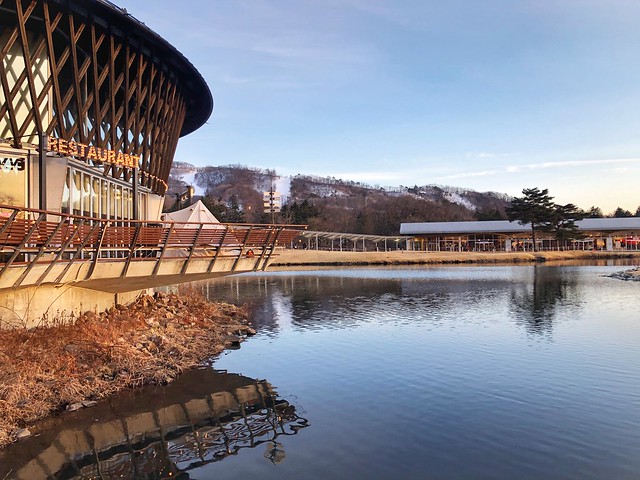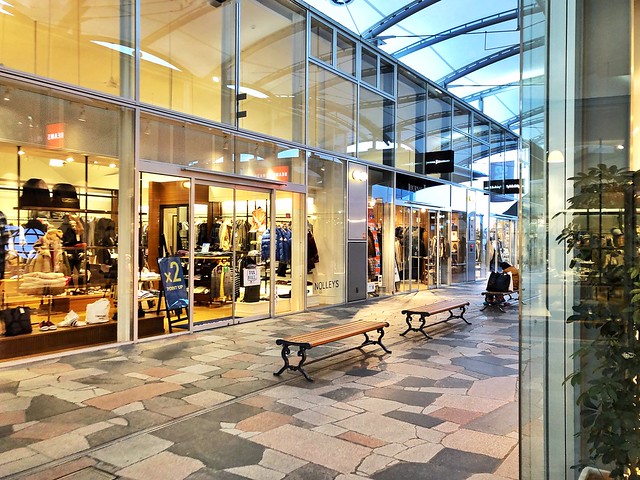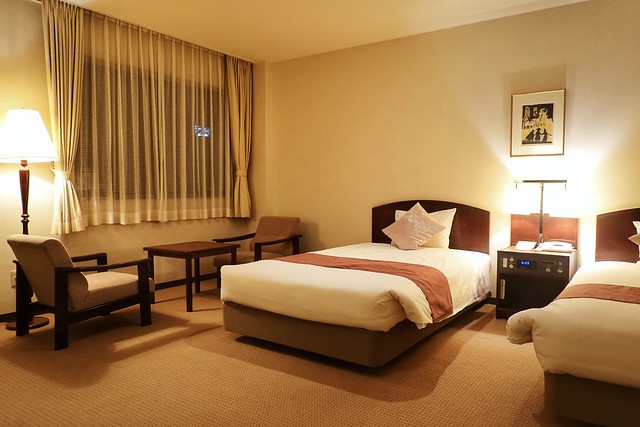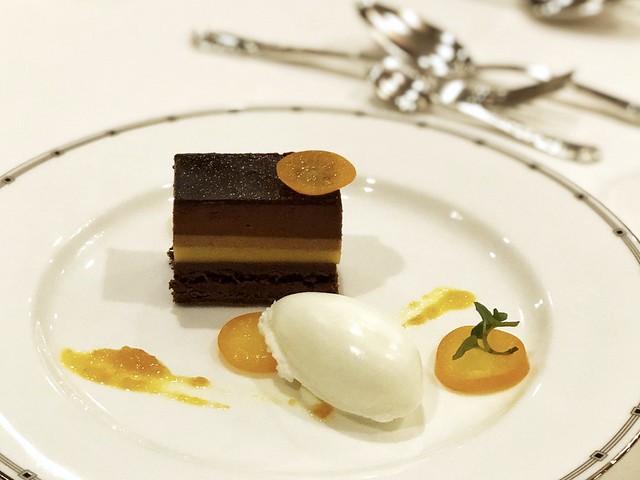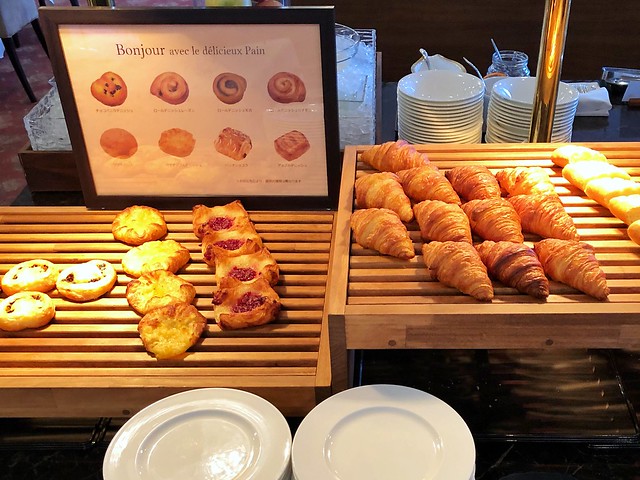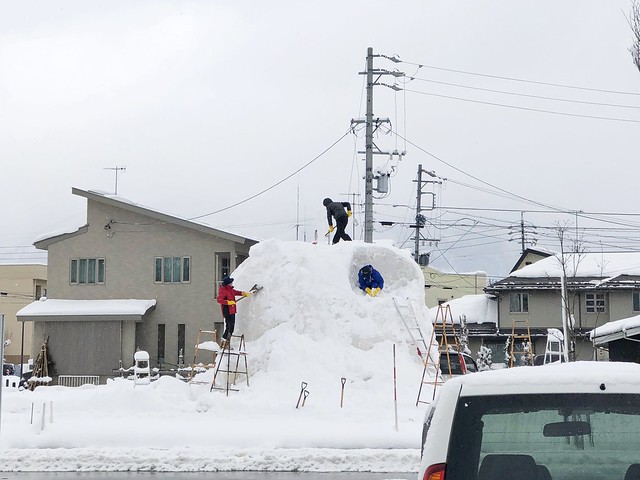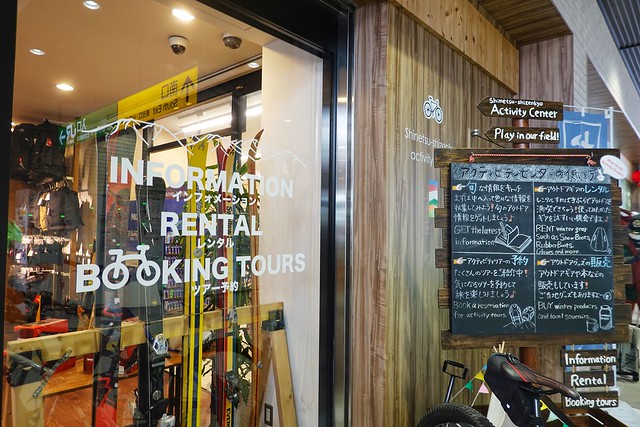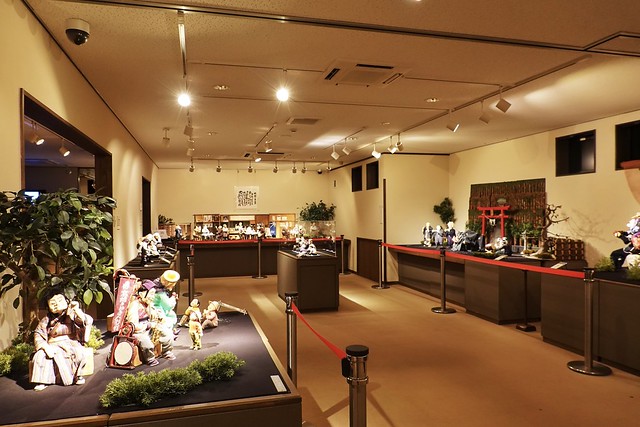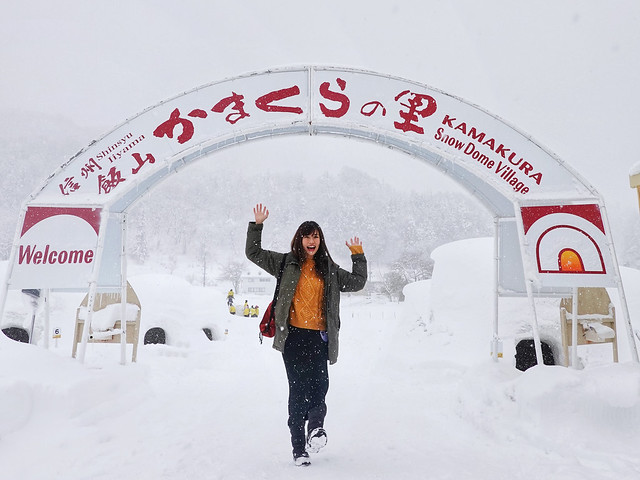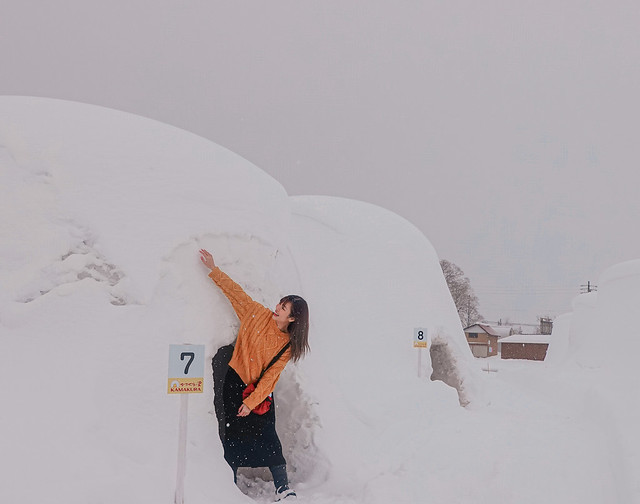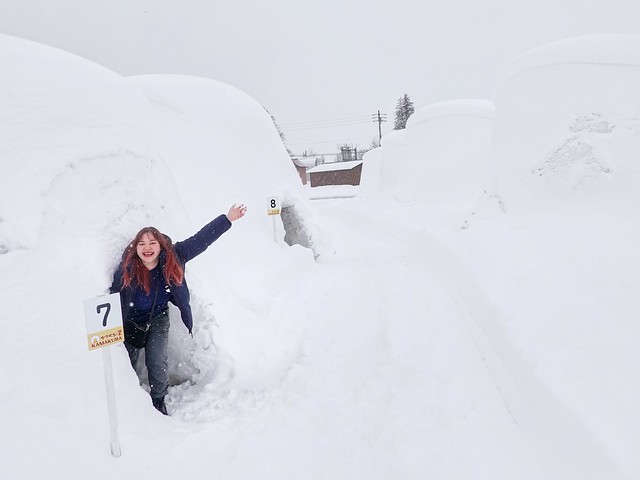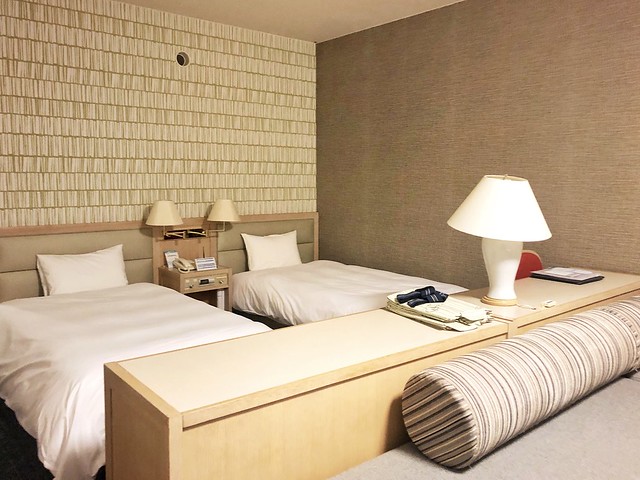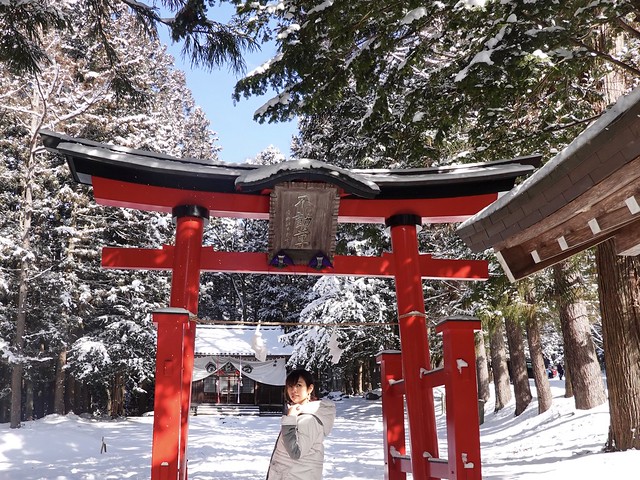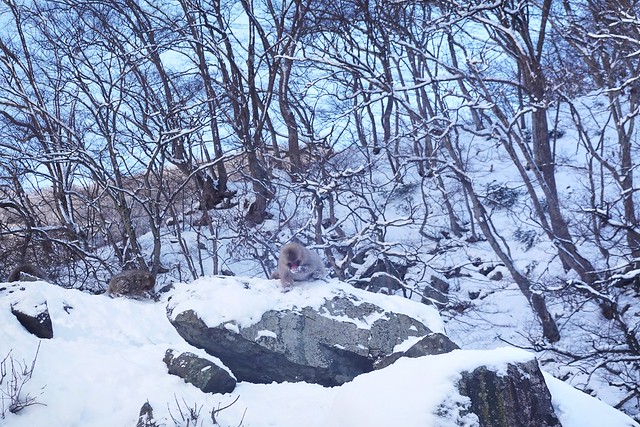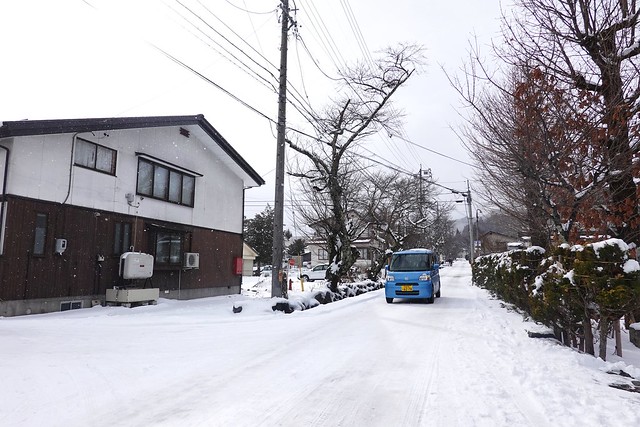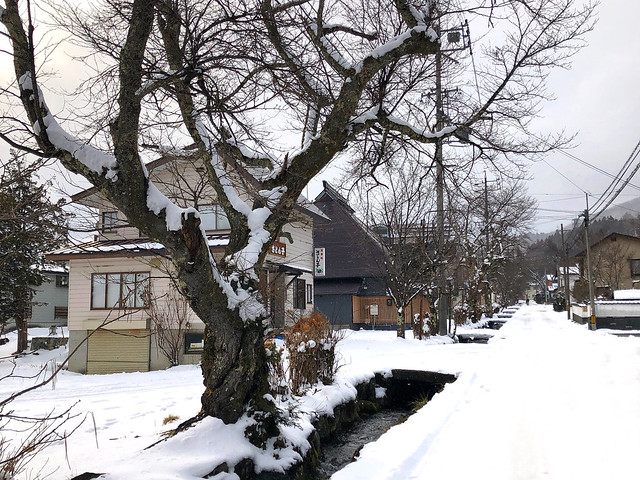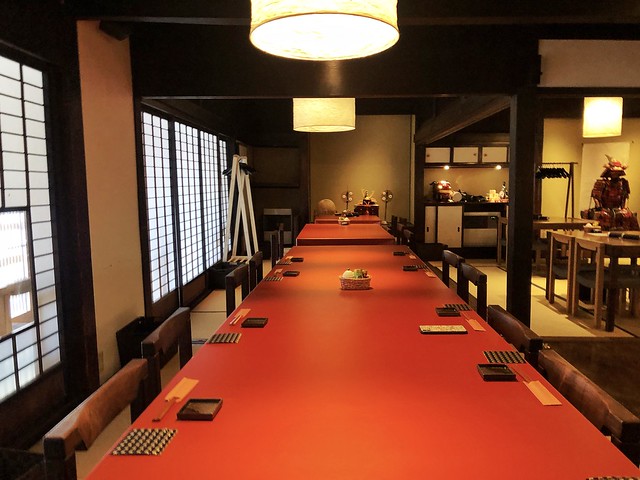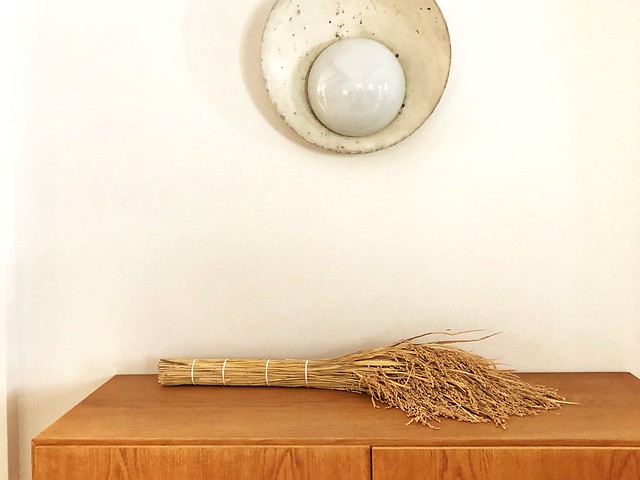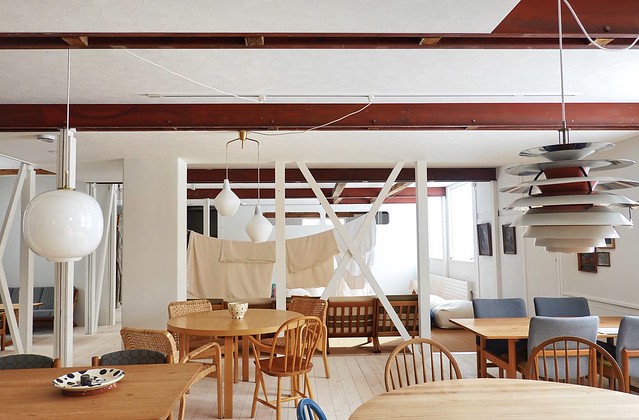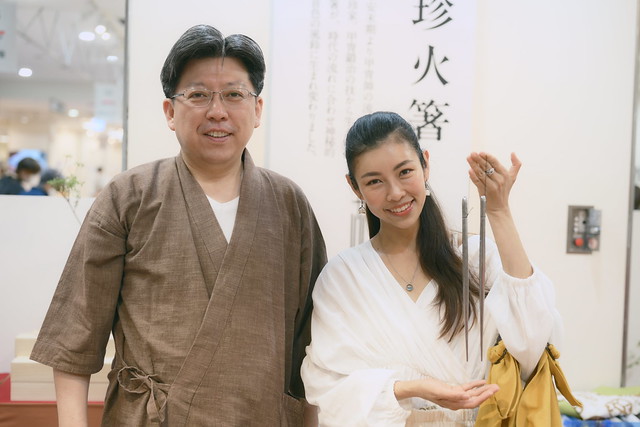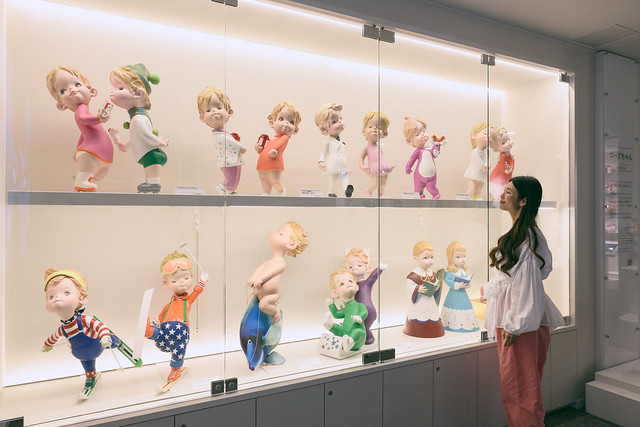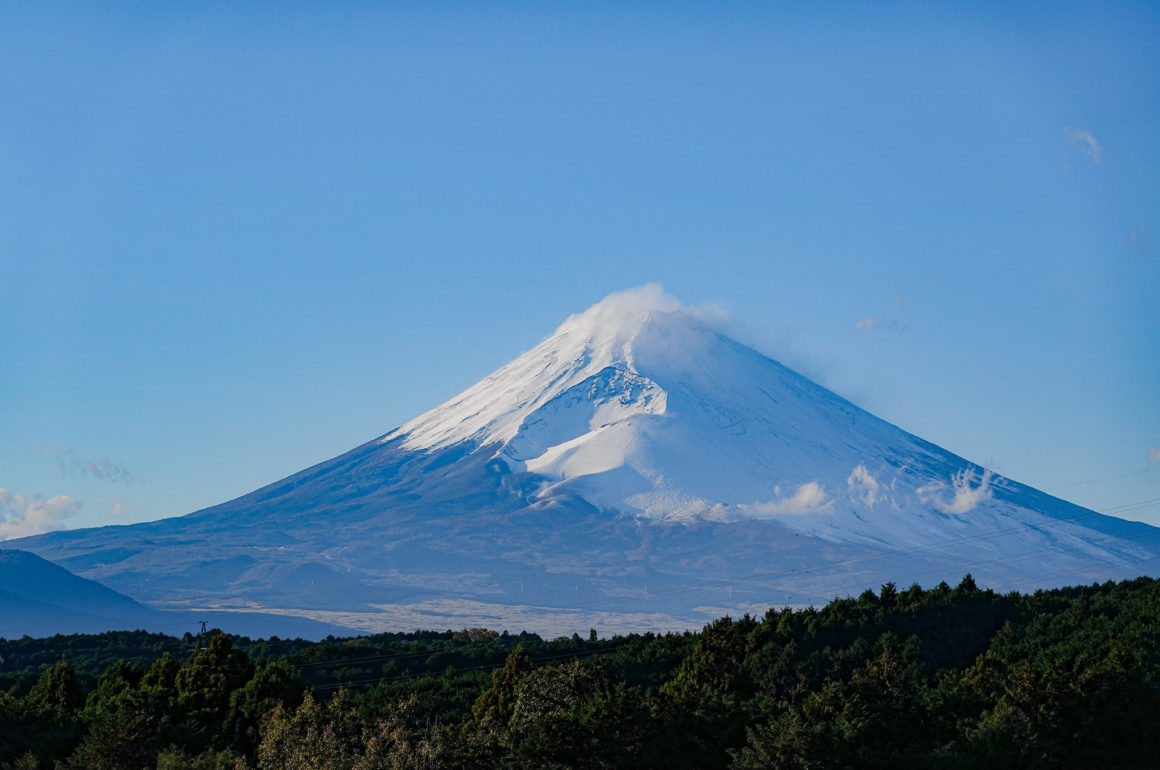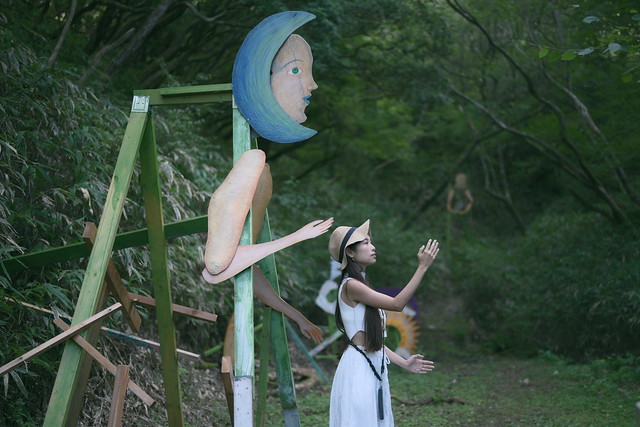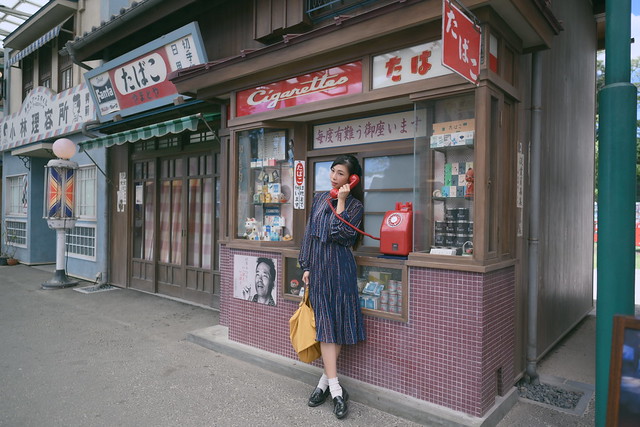
The next chapter of our journey led us to this prefecture in central Japan known as a winter sports destination with its majestic mountains and bountiful hot springs. The 1998 Nagano Olympic and Paralympic Winter Games brought its name to worldwide attention and it has never looked back since. Today, we’ll show how you can explore this scenic prefecture without getting active in sports – unless you count shopping as one!
Visit every attractions featured on this course or take a pick to slot it into your itinerary – the choice is yours.
These are recommendations to complement your ski trips or when your travel companions are into winter sports but you’d rather take it easy during the holiday. Now, welcome to Nagano Prefecture ❤
NAGANO PREFECTURE
Half-Day Itinerary: Karuizawa | 軽井沢
Just a short ride on the shinkansen from Tokyo takes you to this upmarket town of Karuizawa on the base of Mt Asama. We hear the rich likes to own vacation villas here despite real estate prices being comparable to that of Tokyo. Even so, the local government is extremely strict in making sure this town kept as serene as possible. Only 20% of a plot of land purchased is allowed to build a house on top on while the rest of the space remain untouched!
This keeps Karuizawa so peaceful; perfect to escape the hustle and bustle of nearby cities. Fellow Terrace House addicts, you might recognize Karuizawa as the filming location of its Opening New Doors season! I did!
Access: From Tokyo, take the Hokuriku Shinkansen for JPY5500 (Approx. 80 mins) or a highway bus from Ikebukuro Station for JPY2200 (Approx. 3 hours). Bus schedule and route map here. If you’re coming from Nagano Station, the Hokuriku Shinkansen gets you to Karuizawa for JPY3500 (Approx. 35 mins) while the local Shinano Railway Line costs JPY1640 (Approx. 100 mins).
Usui Pass Observation Platform | 碓氷峠見晴台
Admission fee: Free
This quiet observation deck serves an incredible view right on the border of Gunma and Nagano Prefecture, also makes a cheap cheat sheet for ticking two prefectures off your #47Prefecture conquering, if you allow yourself to.
Standing here at 1200m above sea level on its “Sunset Point”, we were treated to the magnificent mountainscape of Gunma Prefecture as well as the active volcano Mt Asano of Nagano Prefecture.

There’s a short paved slope to get to the observation platform and depending on the weather, it’s slippery when it’s icy like the day of our visit. Wear proper shoes in winter time! This spot isn’t necessarily a must-see sight as access is rather limited by public transport especially during winter, but if you’re driving and searching for serene scenes away from the Karuizawa crowd – this is it. There’s a shrine nearby too if you have time to spare before heading back down.
Access: For winter travelers, a short taxi ride from Karuizawa Station costs about JPY2800 (Approx. 15 mins). From late April to late November, the Karuizawa Red Bus gets you there from Tokyu Harvest Club Kyukaruizawa – which is a 15 minutes walk from Karuizawa Station – for JPY500 (Approx. 30 mins). Bus route and schedule here. Useful pickup point guide here.
Karuizawa Prince Shopping Plaza
| 軽井沢・プリンスショッピングプラザ
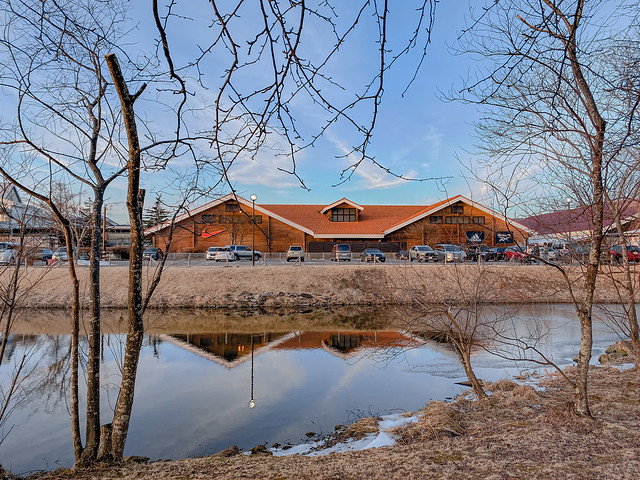
This outlet shopping paradise is massive! Karuizawa Prince Shopping Plaza‘s open-space concept gives it an easy-going park-like atmosphere, possibly to calm excited visitors like us as we get wide-eyed over its 200+ stores haha
We saw international designer brands like Marc Jacobs, Prada, Kata Spade, and Jimmy Choo as well as regular-people brands like Adidas, Beams, Levi’s, and Under Armour. There are plenty restaurants too but guess where we both spent the longest time browsing in? The souvenir stores offering local snacks and delicacies!
We stayed till sunset and admired the twilight view over the sweeping lake.
It’s convenient location by the main station makes this outlet shopping mall a great stop as the start or finish to any Karuizawa trip, even if it’s just for a meal or last-minute souvenir shopping! We saw plenty coin lockers of various sizes to save you the unnecessary trouble of lugging bulky baggages around its extensive grounds. There’s free wifi too!!
Access: Walk 5 minutes from Karuizawa Station, specifically its South Exit.
Stay: Hotel Marroad | ホテルマロウド軽井沢
This is a hotel to remember. Hotel Marroad in Karuizawa is a stylish boutique hotel; staffed with impressively strong women who carried our heavy luggages up the stairs (over 20kg!) without breaking a sweat. We were blown away!! The kind gentlemen we were travelling with wouldn’t allow the petite ladies such burdens but they held firm and insisted to help with it. We’ve never seen such surprising display of strength (literally!) and couldn’t help but wonder if they had special weight training as part of the job!
True to its European vibes, Hotel Marroad is home to a sophisticated French restaurant, Lumière. It serves exquisite dishes made with locally-sourced vegetables and imported French ingredients, resulting in a delightful synergy of flavours. It is at times like this that I’m grateful to be able to read katakana to pronounce the names of French dishes!

Highlights included a cauliflower cream soup with delicious warm bread, tender Japanese beef fillet with black truffle sauce, and moist chocolate cake with kumquat and yogurt sorbet – a surprising combination that beautifully complemented the rich chocolate indulgence.
As menu changes seasonally, look out for updates here.
Lumière’s breakfast buffet was also a sight for sleepy eyes! Beautifully presented! The assortment of breads and pastries were absolutely toothsome. By far the best baked goods I’ve had at any hotel’s breakfast buffet. GO FOR IT.
Access: Walk 15 minutes from Karuizawa Station, specifically its North Exit, or take a quick taxi ride if you’ve got tons of luggages for about JPY850 (Approx. 5 mins).
Half-Day Itinerary: Iiyama | 飯山
Iiyama is tucked between mountain ranges on the northern edge of Nagano Prefecture that offers beautiful natural landscapes all year long. Every February, it is blanketed with some of the heaviest snow that transforms this humble city into a winter wonderland as the residents come together to celebrate the season!

The annual Iiyama Snow Festival and Iiyama Kamakura Snow Dome Village are winter must-visits that you can’t miss! While we arrived slightly too early for former (the locals were halfway through sculpting snow sculptures all over town!), we were perfectly in time for the latter.
Access: From Tokyo, take the Hokuriku Shinkansen to Iiyama Station for JPY8780 (Approx. 110 mins).
Those coming from Nagano Station can take the Hokuriku Shinkansen that offers time-saving convenience at JPY2910 (Approx. 11 mins) while the local Shinano Railway Line serves as an budget alternative at JPY500 (Approx. 45 mins). From Karuizawa Station, the Hokuriku Shinkansen also departs to Iiyama Station for JPY5150 (Approx. 45 mins).
Iiyama Station Tourist Information Center
|飯山駅観光交流センター

Official photograph from Shinshu Iiyama Tourism Bureau.
A compulsory first-stop in your journey should be Iiyama Station’s Tourist Information Center, bright and warmly welcoming to both local and foreign visitors. Even if you already know where you’re heading to, we recommend to stop by for the latest updates – this is important with seasonal tourism activities that may change depending on the weather! The friendly English-speaking staff are happy to share free wifi as well as assist with last-minute ticketing and bookings.
If you’re looking to explore the great outdoors, Shinetsu Shizenkyo Activity Center just next door offers tours, guides, winter wear, and equipment rentals for nature-lovers and adventure-seekers. Felt so welcomed to see English words on its signs! Little considerations like that makes our journey in a foreign country much more reassuring, don’t you think?
Mayumi Takahashi Museum of Doll Art
| 高橋まゆみ人形館
Admission fee: JPY610
Just a stone’s throw away from Iiyama Station, we headed towards this absolute hidden gem! It’s home to a village of miniature dolls handmade with great care by – you guessed it – Mayumi Takahashi, a local resident of Iiyama. Each doll depicts real-life scenes and expressions of the countryside, especially of its hardworking senior citizens. Having personally experienced – albeit briefly – the countryside farms of Japan, I felt an unexpected wave of nostalgia.

Sneak peek! Official photograph from Mayumi Takahashi Museum of Doll Art.

Photographs taken with special permission.
From elderly farmers taking a break on a sunny day to a jolly child enjoying a simple orchard picnic with his grandparents to an old couple happily leaving the local street food store after a satisfying meal, we were amazed at how perfectly these moments were encapsulated! Each tells a story without the need for words.
We were deeply moved by the feelings evoked simply by observing the dolls’ expressions. Truly a memorable experience and I can’t recommend this museum enough. Also, if you’re wondering, it’s not at all creepy ok! Haha
Access: From Iiyama Station, walk for about 20 minutes or take a train to Kita-Iiyama Station for JPY150 (Approx. 3 mins) then walk about 6 minutes to the museum.
Iiyama Kamakura Snow Dome Village
|いいやまかまくらの里
Admission fee: Free
Every winter, a small village of kamakura (also referred to as snow domes, snow huts, or igloos) is specially built just outside the main city area for locals and visitors to make merry with its abundant snow. We got here just as the Iiyama Kamakura Snow Dome Village was completed!

Standing out in the middle of the snow white scenery is a bright red torii of Kamakura Shrine.
It is in fact a genuine shrine! Isn’t it perfectly quaint?
Not only do you get to play in and around the snow huts, they serve hotpot here too! Specifically the noroshinabe, a classic specialty of Nagano made with mushrooms, local vegetables, and pork slices bubbling away in a clay pot.
What can be more perfect than slurping on piping hot soup when it’s freezing outside? I’d say nothing! This rare experience is priced at JPY3500/pax for minimum 2 pax; advanced reservation is required for lunch or dinner. We hear its night illumination makes the snowscape all the more magical so perhaps book an early dinner to experience both views!
Access: From Iiyama Station, catch a direct bus to Shinanodaira Bus Stop for JPY300 (Approx. 15 mins) then walk shortly over to the snow hut village. Bus route and schedule here.
Stay: Tangram Hotel & Resort | ホテルタングラム
For the night’s stay, we went over the neighboring town of Shinano to put a night in Tangram Hotel & Resort. It is conveniently located in front of a ski slope for winter sports aficionados to directly access its fine powder snow. Ski facility details here.

Those traveling with young ones will be glad to find this tatami-style room infant-friendly.
We checked-in into its twin room and was pleasantly surprised to find a large couch to lounge and stretch out all over as we get irresistibly hooked on Japanese tv variety shows.
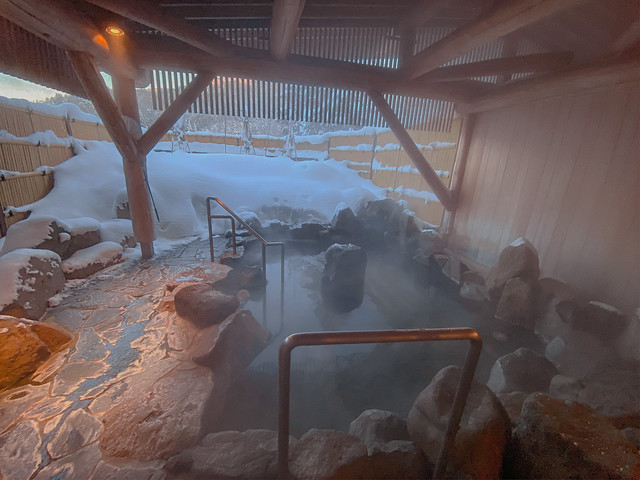
We were more delighted to discover that the hotel has a natural onsen which is honestly the best way to end any cold winter’s night.


The rate for one night’s stay starts from JPY9800 (depending on season), and it includes a tantalizing spread of dinner buffet (yes!! free-flow oden!), but if you are in the mood for something fancy, I totally recommend you to just top up JPY2800 for an exquisite at one of its restaurants, Le Tangram, offering fusion Japanese course meal. Even if you are not a hotel guest, you are welcome to just dine in for JPY6600 onwards per pax.
Highlights of the elegant Japanese course we enjoyed include:
A luscious appetizer that combines the freshest seasonal sea treasures of different textures, including my favourite amaebi (sweet shrimp) and scallops. It was delicious!

Sashimi of the day was Kinmedai – spendid alfonsino.

Ichigo Tempura?!
An unexpected combination of strawberries fried in a crisp coat of soba flour, paired with delicately marinated local fish slices and banana coulis sauce. You’d imagine it to be sweet but it was surprisingly light and well-balanced.

Perfectly grilled local beef on top of local Shinshu apple couscous, drizzled with Shinshu miso butter sauce. The apple’s subtle sweetness beautifully complements the tender beef and miso sauce. Did you know that Shinshu (信州) is the the traditional name of Nagano Prefecture? Shinshu is so famed for its own brand of sweet red apples that even KitKat is produced in this flavour!
Access: <Ski Season Only> From Iiyama Station, buses on the Madarao Express Tangram Line head to the hotel for JPY1000 (Approx. 45 mins). Bus route and schedule here. If you’d like to get here by bus straight from Tokyo’s Haneda Airport, the Nagano Snow Shuttle can be reserved for JPY12,900 (Approx. 4 hours 30 mins). Bus route and schedule here.
Half-Day Itinerary: Yamanouchi | 山ノ内町
While Yamanouchi might sound unfamiliar, you’re likely to be aware of the popular sight of red-faced snow monkeys relaxing in a hot spring bath surrounded by white snow. THIS IS IT. Yamanouchi in Nagano is the only place in the entire world where this happens and we’re heading there to see it with our own eyes! For easy orientation, let’s set Yudanaka Station as the base from which we travel around these spots.
Access: From Tokyo, take the Hokuriku Shinkansen to Nagano Station for JPY8340 (Approx. 100 mins). From there, take the Nagano Dentetsu Line to Yudanaka Station for JPY1290 (Approx. 50 mins).
<Ski Season Only> Alternatively, from Iiyama Station, it’s way cheaper and quicker to take the Shiga Kogen Line express bus directly to Snow Monkey Park for JPY1100 (Approx. 35 mins). Bus route and schedule here.
Kamibayashi Fudouson Temple | 上林不動尊
Admission fee: Free
This small Buddhist temple is located just before the long walking trail to the central attraction of Jigokudani Monkey Park. It’s bright red torii gate stands out in the pure white snow, making it an arresting sight in the winter’s monochromatic colour scheme. Stop by for some photos and take a breather before the light exercise ahead.
(Just in case why you are wondering it is a temple instead of a shrine, given the obvious symbol of shintoism – vermilion torii gate, google “Shinbutsu Shugo”. It will give your spiritual journey to Japan much more depth!)
Jigokudani Snow Monkey Park | 地獄谷野猿公苑
Admission fee: JPY800
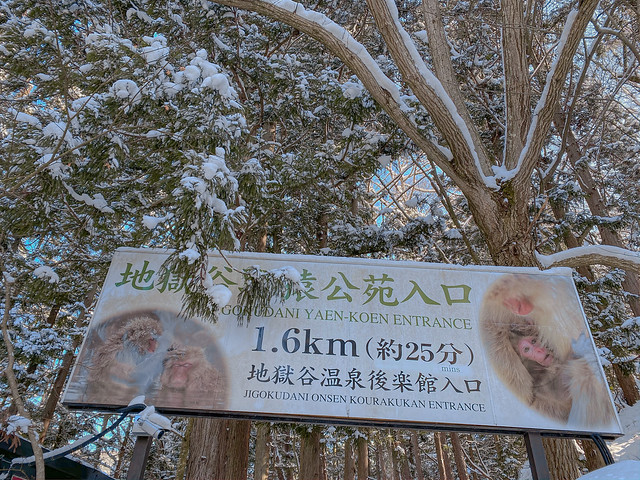

YES. The world-famous snow monkeys take an onsen bath and we’re here to see it!!
Just to be clear, this is a natural phenomenon. The wild snow monkeys aren’t trained nor forced to soak in the onsen all day to appeal to tourists. The monkeys do it mainly to keep warm on cold winter days though it’s also possible to see them lounging in the bath in other seasons. There will be times where you might miss the famed sight as they’re not kept caged in this park. To quote it’s official website, “They also have their own life outside of the park.” haha! The considerate management has installed a live cam here for visitors to track its current condition before making the trip over.
Which is probably what we should’ve done because the onsen was empty when we first arrived!
Many of them hung around the grounds in close view before – alas! – a single snow monkey headed towards the steaming onsen and we caught this moment! Of contemplation, perhaps. Sure looks like he’s deciding if he should get into the bath!

The walk through its winding forest path (the walk is at least 20-30 minutes, so get your legs prepared!) to get there was particularly scenic with beautiful trees soaring high and a charming little ryokan on the way.

We couldn’t help stopping to take photos! Make sure to wear proper shoes as it may get slippery in winter months. If you don’t have any, no worries, there’s rental service at the park entrance.
Access to Kamibayashi Fudouson Temple & Jigokudani Monkey Park:
From Yudanaka Station, take a bus on the Yudanaka-Kanbayashi Line to Kanbayashi Onsen Bus Stop for JPY310 (Approx. 15 mins). Side note, this is where you should use the restroom because there aren’t any at the park. From the bus stop, walk about 30-40 mins through the forest path to Jigokudani Monkey Park.
<Ski Season Only> Alternatively, from Nagano Station, take the Shiga Kogen Line express bus to Snow Monkey Park for JPY1500 (Approx. 40 mins) and walk through the forest path. Bus route and schedule here. There are plenty of signs to guide you. We hear some lodgings offer free rides for guests so if you’re spending the night nearby, do ask if they’d be able to do so.
HAKKO Restaurant
3010 Hirao, Yamanouchi, Shimotakai District, Nagano
For lunch, we made way to this hip local restaurant whose menu mainly highlights locally-sourced ingredients and features the use of eight fermented ingredients: miso, soy sauce, sake, yogurt, bread, pickles, malt, cheese.
Hakko (発酵) – “fermentation”, is the theme of this restaurant, it’s a rising trend in Japan to consume fermented food (and it’s not a new diet. Think the traditional natto – fermented beans – which is said to have started since Yayoi Era – which is 300 BC!!!) for better health. This includes an good selection of craft beers and ales, some of which are locally made in Nagano.

Lunch set choices offer mains like grilled chicken, grilled beef, curry (SO GOOD!) and more that comes with salad, rice, soup, drink, and dessert for about JPY1200-JPY1600. It was a great meal set in a modern yet cozy ambiance and the portions were satisfying, especially after the long walk we had. It’s vegetarian-friendly too!
(Cheesie: this is one of my favorite restaurants during the trip!)
Access: Walk a short 5 minutes from Yudanaka Station.
Half-Day Itinerary: Hakuba | 白馬
Set in the Northern Alps of Nagano Prefecture, Hakuba is internationally recognized as a winter sports destination famed for its powder snow and excellent ski resort choices. In 1998, it played host to several competitions during the Nagano Winter Olympics, which further drives its worldwide fame for skiers and snowboarders.
Hakuba is convenient for non-Japanese speakers to visit as English is commonly spoken and to some extent, Mandarin too. We’ll save the report on snow sports for another post! Today let’s shine the spotlight on this small, off-the-beaten-path village of Shinden | 新田, located by the Iwatake area within Hakuba.
It’s lined with old inns and traditional homes; some of which have been restored and repurposed into chic establishments without losing its historical identity. The quietly murmuring creeks that weave through the village lend a soothing atmosphere to the tranquility here on a beautiful winter’s day.
Access: <Ski Season Only> From Tokyo, take the Hokuriku Shinkansen to Nagano Station for JPY8340 (Approx. 100 mins). From Nagano Station, take an express bus to Hakuba Station for JPY2000 (Approx. 70 mins). Bus route and schedule here. There are also direct bus services from Haneda Airport to Hakuba Station for JPY9300 (Approx. 5 hours 30 mins). Bus route and schedule here.
From Hakuba Station, the Hakuba Valley Shuttle Buses takes you to Happo or Iwatake for JPY500 in mere minutes. Bus route and schedule here. There, hop onto the bus from Happo or Iwatake Gondolas straight to Shouya Maruhachi Dining in Shinden in just 4-10 minutes for JPY500. Iwatake Shuttle Bus route and schedule here.
Spots below are just a 3-minute walk from Shouya Maruhachi Dining / Iwatake Shinden Bus Terminal.
There are also overnight buses from Tokyo by JamJam Liner runs directly to Iwatake Shinden Bus Terminal for only JPY5000 (Approx. 7 hours 30 mins). Bus route, schedule, and English booking service here.
Shouya Maruhachi Dining | 庄屋丸八ダイニング
11032 Hokujo, Hakuba, Kitaazumi District, Nagano
Birthed from the private residences of olden days, Shouya Maruhachi‘s exterior is unassuming yet its interior is rich with decorative details that fuses Japanese heritage with a contemporary touch. This building is more than a hundred years old and I love how authentic structures are integrated with modern refurbishment. 100% certified insta-worthy, for sure!
Like this samurai armour that any guest can put on for photos!
Also serving as Hatago Maruhachi‘s – yes you can book a night’s stay in its deluxe inn too! – guesthouse reception, this restaurant specialises in fresh seasonal seafood and robatayaki-style charcoal-grilled Japanese cuisine.

While it’s open only for dinner, we enjoyed a lunch set specially arranged for us. It was delicious!
Snow Glamping | スノーグランピング
Glamping outdoors in mid-winter? YES. You read that right.
Japan makes things like this happen and we were thrilled to stumble on this hidden gem by chance!

These snow glamping facilities are specially prepared by Hatago Maruhachi on its grounds as another fun winter activity besides skiing and snowboarding. Rather than spending a night here, you can reserve these transparent domes for two hours to enjoy a nabe hotpot dinner complete with unlimited gourmet snacks like ham and cheese, accompanied by fancy drinks like wine and champagne for JPY5000 per person. I trust this will be an unforgettable experience to share with your travel companions! Such a rare chance to embrace the magic of winter’s snowfall while tucked in the comfort of plush couches and warm indoors!
Hakuba Ham | 白馬ハム


Just a short walk away, Hakuba Ham produces artisanal hams, smoked meats, and gourmet sausages from locally-bred pigs in Hakuba. These piglets are raised in an environment rich in nature and fed on sake lees to produce prime cuts of pork with deep, refined flavour. These are supplied to ski resorts nearby too!
Stay: Haluta Hakuba| ハルタ白馬
Where do we even begin with Haluta Hakuba? To call it a hotel seems unfitting. Perhaps retreat or getaway would be a better word to describe this distinctive brand of lodging. It is bright, airy, warm, and relaxed.
Every turn leads you to moments that seem closer to still art than real life; yet it remains unpretentious.
Fitted with vintage and restored Scandinavian furniture, even stylish wooden doors seem artfully-worn, this homely stay aims to foster a sustainable way of life. Even the lengths of fabric tastefully draped over its lounge area are made with organic cotton. Guests are encouraged to take it easy; letting yourself flow along in the stream of space and time.

Organic lifestyle is the norm here with its little grocery corner and cafe called bio kiosk.

This space feels more like a home than hotel. True to its self-retreat concept, Haluta Hotel features a mineral mist stone bath that warms your body and supports immunity. Especially in the dry winters, I can see how this can be a therapeutic oasis to our senses. Alas, we didn’t get the chance to spend the night here but we fell absolutely in love with Haluta Hakuba!
We hope this post gives you an idea of different snow activities and sights that you can fit into your winter holiday in Nagano Prefecture. As a non-athletic individual, I know how traveling with sporty companions can be tricky when it comes to settling on an itinerary that both parties could thoroughly enjoy. We had such a blast checking out these places to dine, play, and stay! It is my first ever visit to this snowy prefecture and it certainly won’t be the last!
Stay tuned to our final post on this series – <Ski Time in Nagano>, featuring the best of the best ski resorts in Nagano prefecture, specially for the true blue winter sports lovers!





